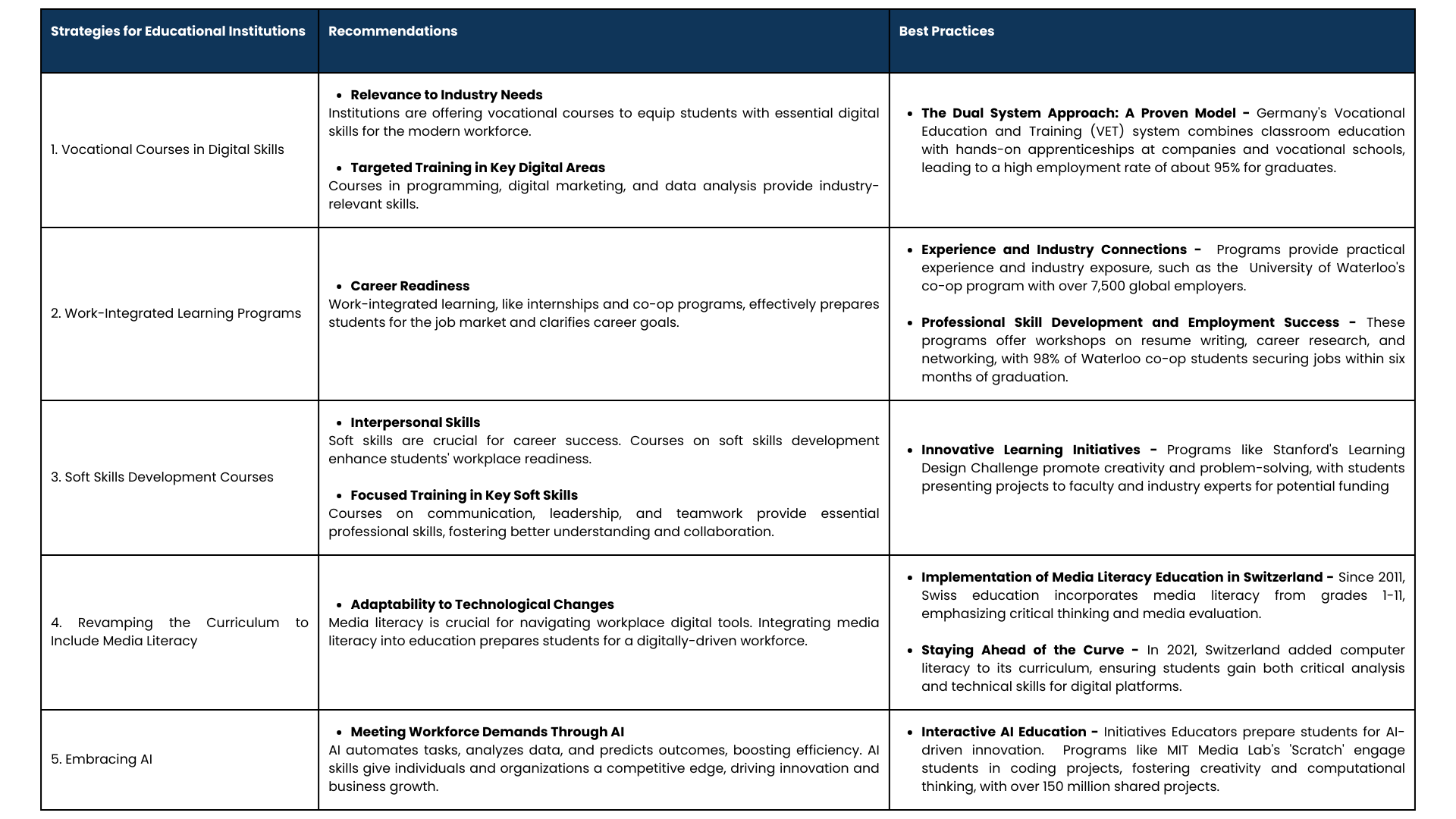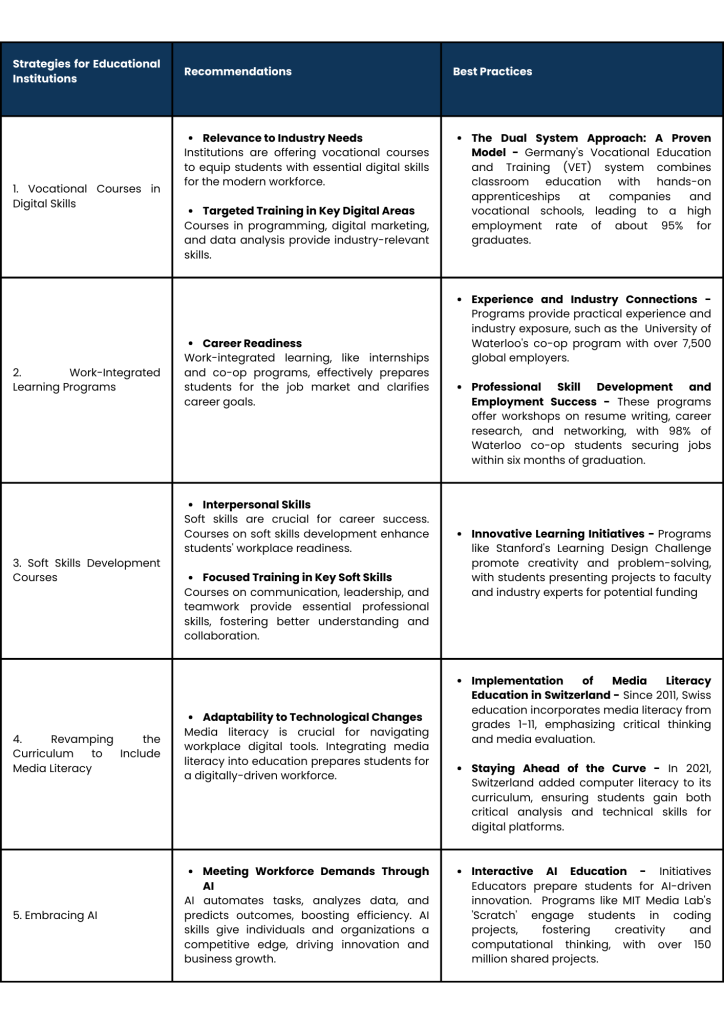
21 May Bridging the Gap: Preparing Developing Countries for the Digital Workforce
In the ever-evolving landscape of the digital economy, the workforce is required to adapt swiftly to the technological advancements that are reshaping industries. Developing countries are nations where the workforce often lacks the digital skills necessary for the evolving digital economy, leading to high rates of unemployment, challenges in economic growth, and competitiveness. These regions require significant investment in education and training to bridge the digital divide and prepare their populations for the future job market. Developing countries, with their burgeoning youth populations and growing economies, are uniquely positioned to capitalize on this digital revolution. However, the crux of this transformation lies in the ability of educational institutions to equip students with the necessary digital skills.
Educational institutions must integrate digital workforce demands into their curricula, combining practical tech experience with theoretical knowledge. This approach will create a workforce skilled in current tools and adaptable to future innovations. 1Alarmingly, only 2% of Kenyans use the internet for job searches (global average: 17%), and just 4% of adults in Sudan and Zimbabwe can copy and paste files. This skills gap threatens economic growth and limits graduate opportunities in the rapidly evolving digital landscape.

This blog explores how educational institutions can bridge this gap by adopting a forward-thinking approach. By integrating in-demand digital skills, fostering essential soft skills, and embracing technology to create a dynamic learning environment, schools and colleges can empower students to thrive in the digital workforce and contribute meaningfully to the future of the economy.
3A LinkedIn analysis of major Asia-Pacific countries found that 75% of employers reported a surge in demand for digital skills, from basic to advanced levels. As AI reshapes work, displacing traditional roles, and remote and hybrid work models rise, digital literacy is essential. Students must grasp AI and emerging technologies to stay competitive. For educational institutions in developing nations, embracing technology in education is crucial. Prioritizing digital literacy and access to tech-driven learning empowers individuals to succeed in the modern job market.
Let us explore some specific strategies and examples from around the world that demonstrate the effectiveness of educational institutions preparing students for success in the rapidly evolving digital landscape.



In conclusion, the digital transformation in emerging markets presents challenges and opportunities for educational institutions. Despite hurdles, there’s immense potential to equip students for the digital economy. Through innovative strategies like interactive education and practical learning, institutions can empower individuals to thrive in the modern job market. These approaches foster innovation and flexibility, preparing students for tomorrow’s challenges. By prioritizing digital literacy and emerging technologies, institutions enhance students’ readiness for future employment, instilling confidence in navigating the evolving digital landscape.
Blog by Sakthi Kumararaja,
Research Analyst Intern, Frost & Sullivan Institute
